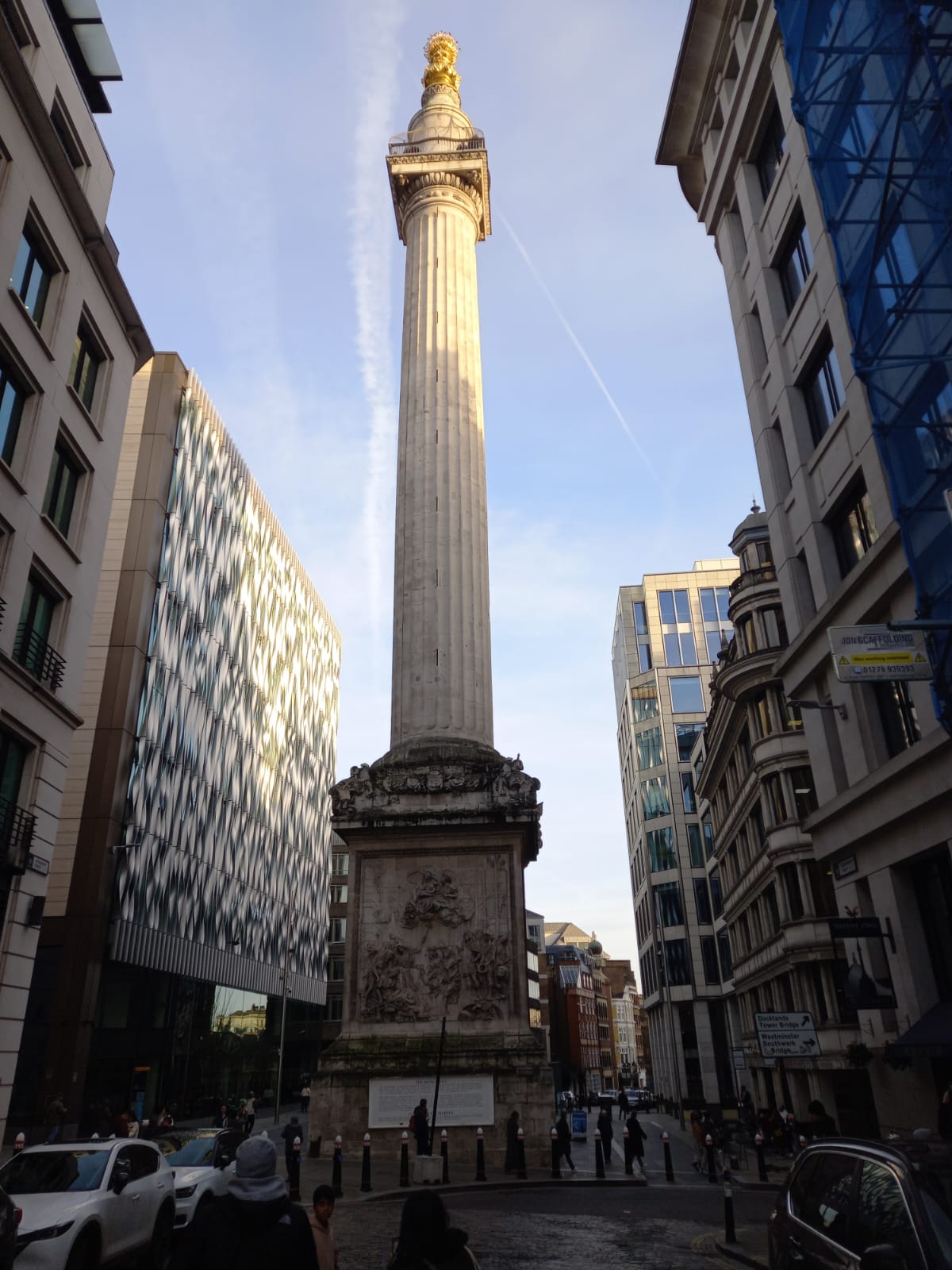The great fire of London is one of the major events in London’s history. On September 2nd in the year 1666 a fire started at Thomas Farriner’s Bakery at Pudding Lane in the medieval historic city of London. The fire broke out in the night and the baker managed to escape on time. The fire started to spread rapidly to the rest of the neighbourhood. The blaze moved further to other neighbourhoods to last for 4 days in total. The removing of structures as a firebreak was the main technique to tackle a major fire. The Mayor at this time Sir Thomas Bloodworth was indecisive in using this method. Medieval London was very dense and destroyed most part of it. This made a completely different reconstruction of London possible.
In 1677 the architect and scientist Robert Hooke decides to build a monument to preserve the memory of the catastrophe. The monument is few steps away from the original place of the fire source in the city of London near London bridge. This column tower is on a former church site to commemorate the great fire. There’s a viewing platform at the top at 61 meters high by using the staircase. The site is grade I-listed monument. Robert Hooke used his monument for scientific experiments as well. He did gravity experiments with the use of a pendulum and used the shaft for a zenith telescope. The monument is accessible by Monument station underground station.

